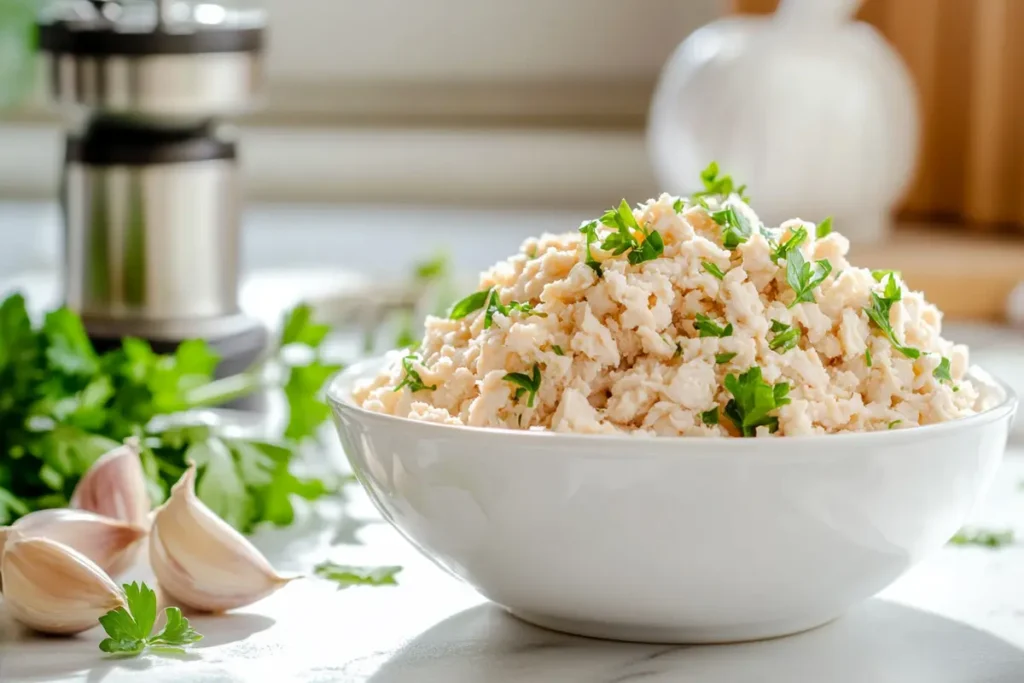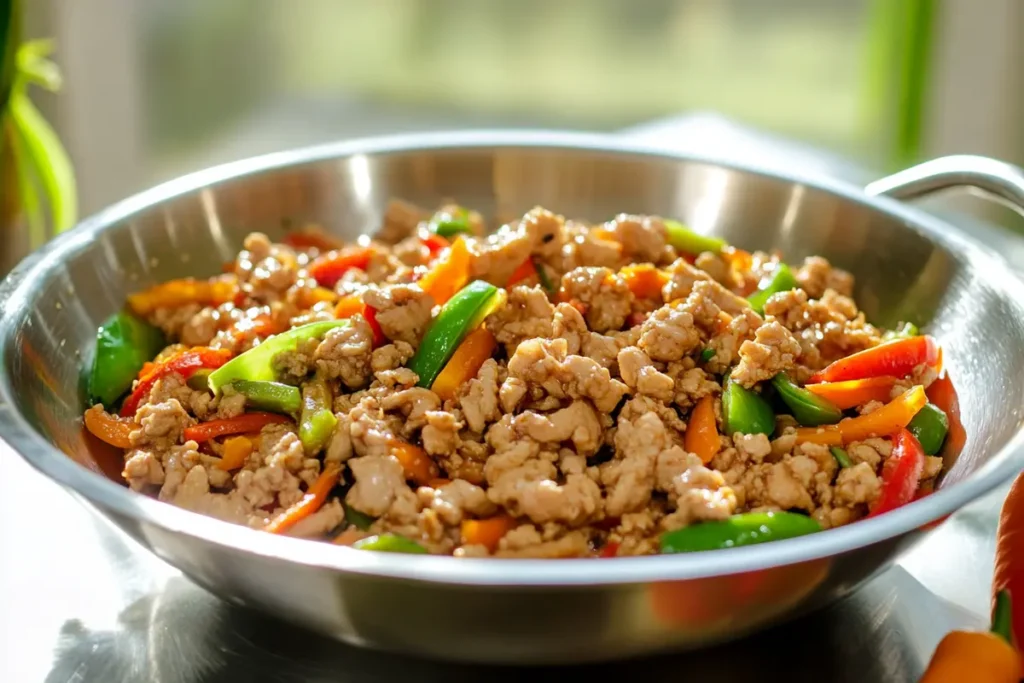Ground chicken and minced chicken are both versatile ingredients that are commonly used in kitchens around the world. Although they may appear similar at first glance, the subtle differences between the two can significantly impact the flavor, texture, and overall outcome of your dish. Therefore, understanding these distinctions is essential for choosing the right ingredient for your recipes. In this comprehensive guide, we’ll explore the differences and similarities between ground chicken and minced chicken, their uses, nutritional benefits, and much more. By the end, you’ll have a clear understanding of whether ground chicken and minced chicken are interchangeable and how to make the most of each.
What Is Ground Chicken?

Ground chicken refers to chicken meat that has been finely processed through a grinder or food processor. It typically includes a mix of various parts of the bird, such as the breast, thighs, and occasionally other trimmings. As a result, ground chicken tends to have a smooth, uniform consistency.
Key Characteristics of Ground Chicken:
- Texture: Ground chicken is smooth and consistent, which makes it ideal for forming patties, meatballs, and creamy sauces.
- Fat Content: Depending on the cuts used, ground chicken can include both lean and fatty parts, adding moisture and flavor to dishes.
- Preparation Method: It is created by processing chicken through a fine or medium plate in a grinder, ensuring an even texture.
What Is Minced Chicken?
In contrast, minced chicken is finely chopped chicken meat, often prepared manually with a knife or in a food processor. It usually consists of leaner cuts, like chicken breasts or thighs, which makes it a bit less fatty than ground chicken. Furthermore, minced chicken retains a chunkier texture, providing a more natural feel.
Key Characteristics of Minced Chicken:
- Texture: Minced chicken is coarser and less uniform, with visible small pieces of chicken.
- Fat Content: Minced chicken is often leaner since it is typically made from specific cuts without additional fat.
- Preparation Method: Instead of grinding, it is finely diced or chopped, resulting in a more rustic consistency.
Key Differences Between Ground Chicken and Minced Chicken
Although ground chicken and minced chicken are similar, they differ in several ways. Understanding these differences is critical when deciding which one to use in your recipes.
- Processing Method:
- Ground Chicken: It is processed using a grinder or food processor, resulting in a fine and uniform consistency.
- Minced Chicken: It is manually chopped or minced using a knife, leading to a chunkier texture.
- Texture:
- Ground Chicken: Its smoother texture is perfect for recipes requiring a cohesive mixture.
- Minced Chicken: With its coarse texture, minced chicken works well in recipes where a natural meat texture is desired.
- Fat Content:
- Ground Chicken: This option often contains additional fat, as it includes both light and dark meat, and sometimes even chicken skin.
- Minced Chicken: Minced chicken is usually leaner since it is made from specific cuts like chicken breast.
- Recipe Use:
- Ground Chicken: It excels in dishes like meatballs, burgers, and sauces where a uniform texture is needed.
- Minced Chicken: Its chunkiness is ideal for stir-fries, dumpling fillings, and wraps.
Can Ground Chicken and Minced Chicken Be Used Interchangeably?
While ground chicken and minced chicken can be substituted in some recipes, the final outcome may vary due to differences in texture and fat content. For this reason, it’s important to consider the following:
- Texture Sensitivity:
Recipes like dumplings or stir-fries benefit from the chunkiness of minced chicken. Conversely, dishes like meatballs or sauces require the smoothness of ground chicken for the best results. - Moisture Content:
Ground chicken’s higher fat content ensures juicier dishes, making it preferable for burgers or patties. On the other hand, minced chicken may need additional fat or liquid to maintain its moisture. - Cultural Preferences:
Some cuisines, particularly Asian dishes, traditionally favor minced chicken for its texture. Meanwhile, Western dishes often call for ground chicken for its uniformity.
Nutritional Comparison of Ground Chicken and Minced Chicken
When comparing the two, the nutritional value can vary depending on the specific cuts and processing methods.
Calories and Macronutrients (per 100 grams):
| Nutrient | Ground Chicken | Minced Chicken |
|---|---|---|
| Calories | 200-250 | 120-180 |
| Protein | 18-22g | 20-24g |
| Fat | 10-15g | 5-8g |
| Carbohydrates | 0g | 0g |
How to Use Ground and Minced Chicken in Cooking
Ground Chicken Recipes:
Ground chicken works exceptionally well in recipes that require a smooth, cohesive texture:
- Burgers: Ground chicken is ideal for creating moist and flavorful patties.
- Meatballs: Its smooth texture blends perfectly with spices, breadcrumbs, and eggs for tender meatballs.
- Bolognese Sauce: Ground chicken provides a lighter alternative to beef, creating a creamy and flavorful sauce.
- Chicken Loaf: The cohesiveness of ground chicken makes it a great choice for loaf-style recipes.
Minced Chicken Recipes:

Minced chicken shines in dishes where a chunkier texture is desired:
- Dumpling Filling: The coarse texture adds a satisfying bite to dumplings and wontons.
- Stir-Fries: Perfect for quick and easy stir-fried dishes, minced chicken absorbs flavors while maintaining its texture.
- Asian Lettuce Wraps: Minced chicken pairs beautifully with seasonings, adding a hearty and flavorful touch to lettuce wraps.
- Stuffed Vegetables: Its chunkier consistency holds up well when used to stuff bell peppers or zucchini.
How to Make Ground Chicken and Minced Chicken at Home
If store-bought options aren’t available, you can easily prepare both at home.
Making Ground Chicken:
- Cut chicken into small chunks.
- Process in a food processor or meat grinder until smooth.
- Use immediately or freeze for later use.
Making Minced Chicken:
- Use a sharp knife to finely chop chicken into small pieces.
- Continue chopping until the chicken reaches the desired texture.
- For speed, use a food processor, but process in short pulses to avoid over-mincing.
Frequently Asked Questions About These Chicken Variations
1. Is ground chicken the same as minced chicken?
No, while both are processed forms of chicken, ground chicken is smoother and more uniform, while minced chicken is coarser and chunkier.
2. Which is healthier?
Minced chicken is often leaner, as it typically uses specific cuts like chicken breast. However, the overall healthiness depends on the cuts and fat content of each.
3. Can I substitute ground chicken for minced chicken?
Yes, they can often be substituted, but the texture and fat content may change the dish slightly. Adjust seasoning and liquids accordingly.
4. How can I prevent minced chicken from drying out?
Add a splash of oil, broth, or sauce to minced chicken during cooking to maintain moisture.
5. What is better for burgers, ground chicken or minced chicken?
Ground chicken is better for burgers due to its cohesive texture and higher fat content, which ensures a juicy result.
Conclusion: Understanding the Key Differences
In conclusion, is ground chicken the same as minced chicken? The short answer is no. Although they share similarities, their differences in texture, fat content, and preparation methods make them unique. Ground chicken’s smooth consistency makes it perfect for meatballs, burgers, and sauces, while minced chicken’s coarser texture works best in stir-fries, dumplings, and wraps. By understanding their distinctions, you can confidently choose the right ingredient to elevate your culinary creations.